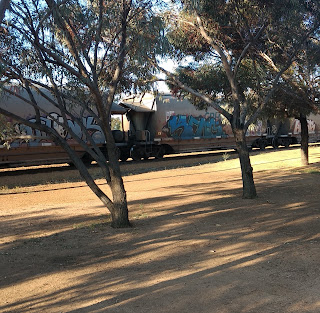Goomalling, Western Australia. 2018. Photo by D.Quirke.
Attendees at the Senior Nurses Leadership Group were instructed yesterday to remove the emergency Parry Packs from all Western Australian wheatbelt sites. The Parry Packs were supplied to rural and remote area health sites and nursing posts in 1996 to support our capacity to deal with trauma. It can take between one and three hours to cut a casualty out of a motor vehicle on isolated roads. I would like to say that I personally do not support this action. I have always endorsed the use of and availablity of the Parry Packs, having worked in rural and remote areas for years. The packs are medium weight, large high visability back packs that contain equipment for dressing wounds, suturing kits, chest drains, basic dressings, and airway equipment. From a personal perspective, it's not about the cost (the packs and contents are over a thousand Australian dollars) but the purpose. I feel if they haven't been used, then we were lucky...very, very lucky.
Dheborah Quirke. Senior Registered Nurse.
Dheborah Quirke. Senior Registered Nurse.









